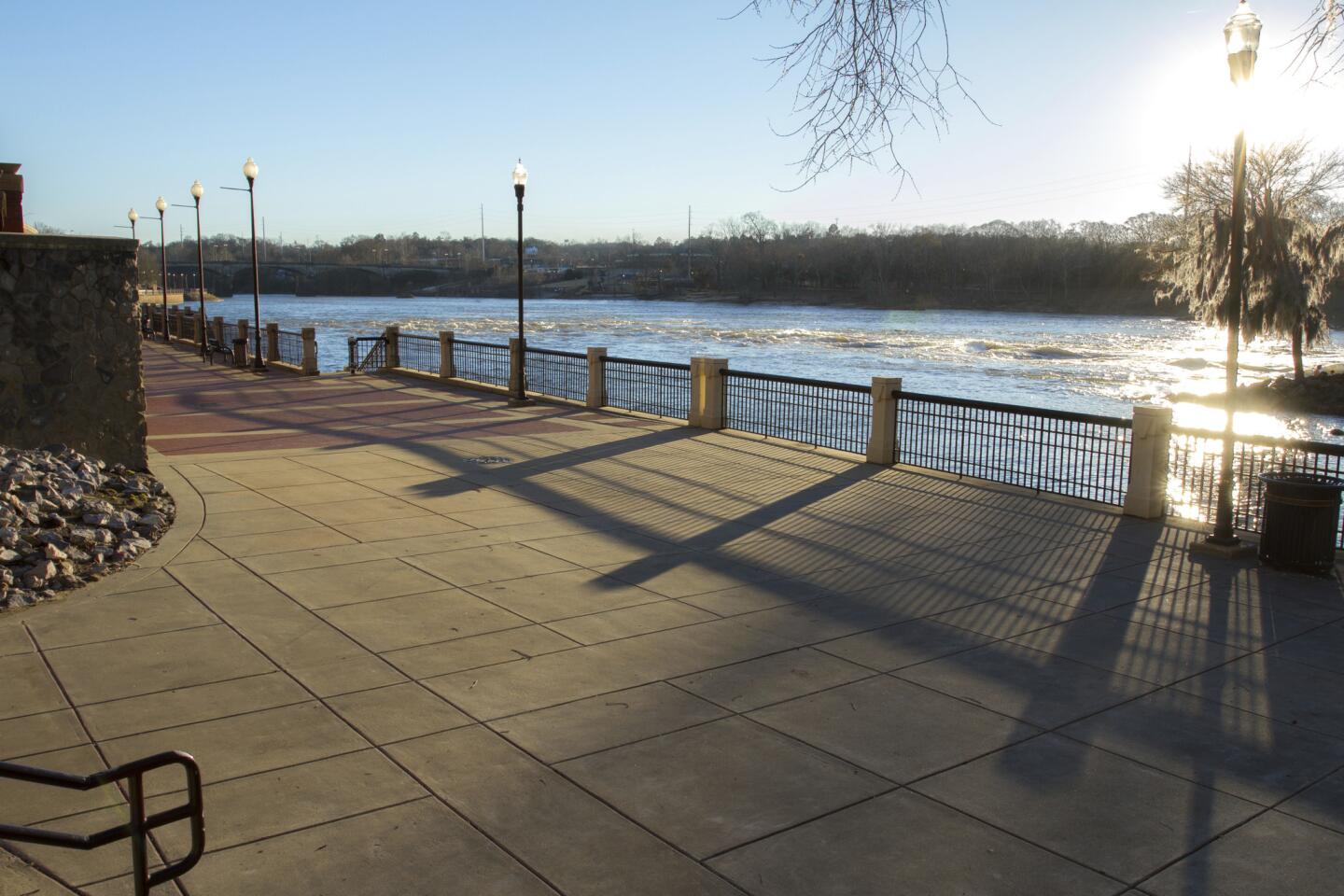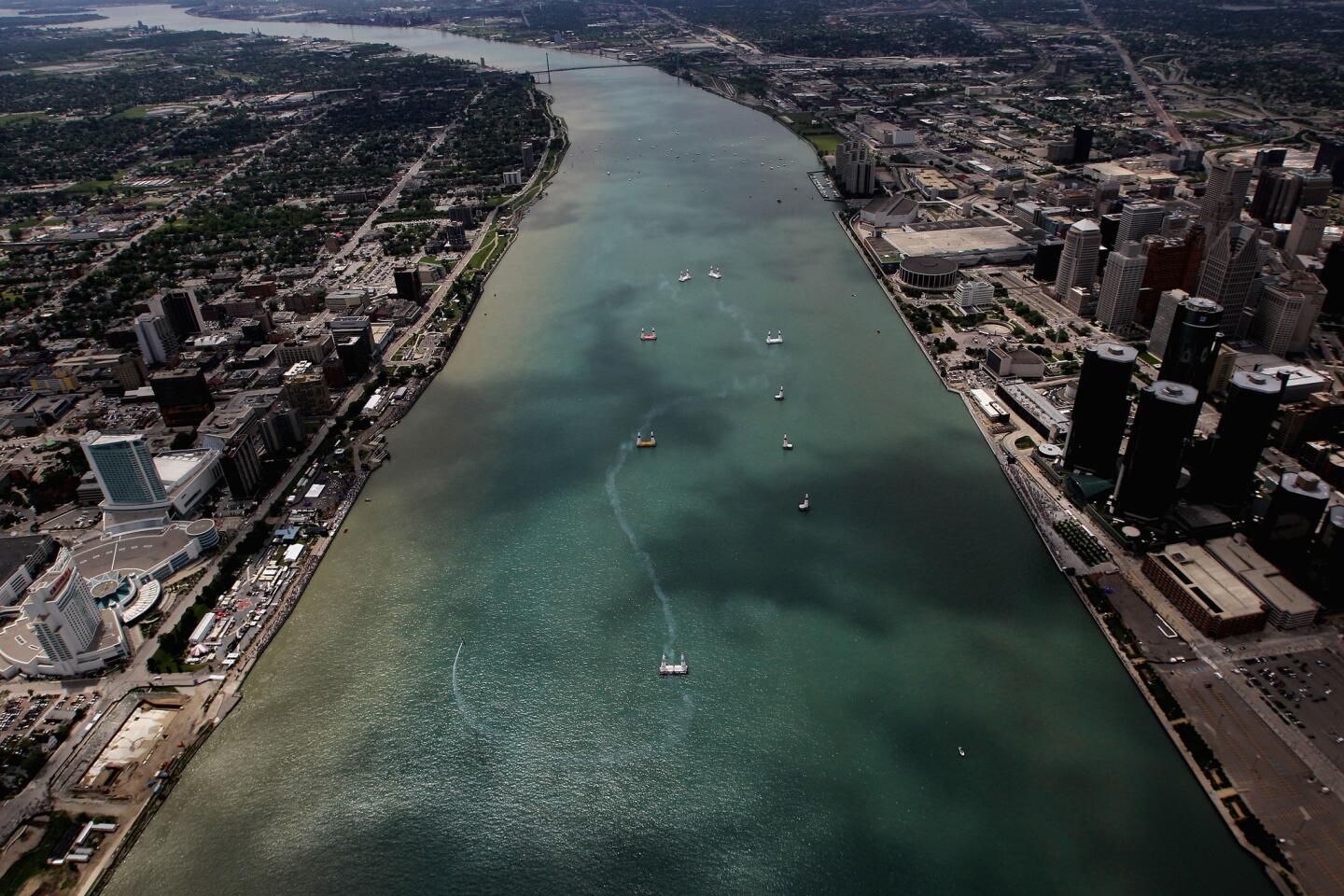What will ‘new’ L.A. River look like? Go to Pittsburgh, San Antonio or Charleston
As Frank Gehry continues to help work out a master plan for the Los Angeles River, there are quite a few sources of inspiration for him to examine.
For decades, cities tended to devote riverbanks to industry, railroads and highways.
“Most American cities turned their backs on the water in the 1950s, ‘60s and ‘70s,” said Ed McMahon, senior resident fellow at the Urban Land Institute in Washington.
NEWSLETTER: Get essential California headlines delivered daily >>
With the decline of industry, cities over the last 25 years have rediscovered their waterfronts.
“There’s hardly a city in the country that hasn’t tried to reconnect with its waterfront,” McMahon said. “Some have had more success than others."
Here are some examples:
San Antonio
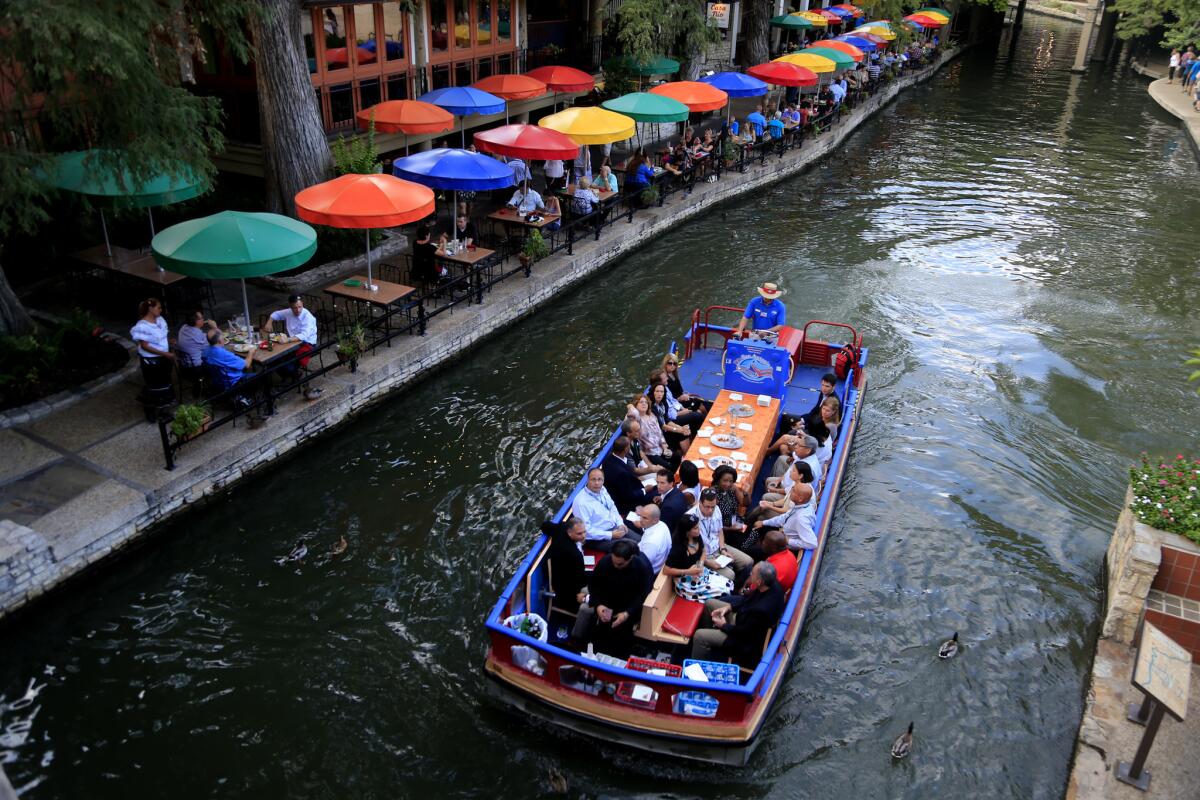
One of the Rio Taxi dinner/cocktail cruise charters floats past the colorful umbrellas at Casa Rio Restaurant on the San Antonio River along the river walk in San Antonio.
One of the Rio Taxi dinner/cocktail cruise charters floats past the colorful umbrellas at Casa Rio Restaurant on the San Antonio River along the river walk in San Antonio. (Mark Boster / Los Angeles Times)
The granddaddy of U.S. riverfront developments is the San Antonio River Walk, which attracted more than 9 million non-resident tourists last year and millions of locals. The attraction generated annual economic benefits of more than $3 billion in 2014.
First envisioned in the late 1920s as a 15-mile linear park with shops and cafes, the project was built in the late 1930s under the Works Progress Administration.
Development was slow. The turning point came in 1968, when the city was host to the World’s Fair, and business for cafes, shops and hotels exploded.
Considered the city’s crown jewel, it is run by a nonprofit group called Paseo del Rio, which sponsors an annual pub crawl and Mardi Gras parade, among other events.
Pittsburgh
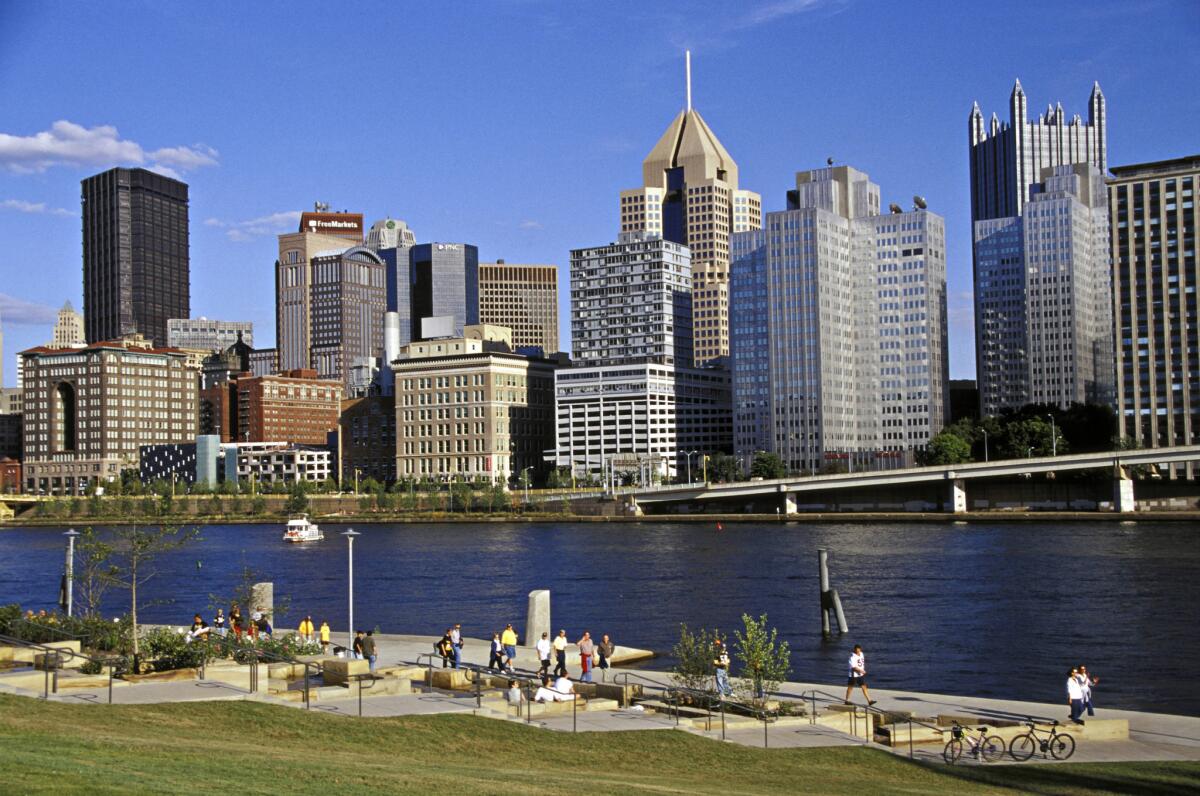
North Shore promenade by Heinz Field, Allegheny River, in Pittsburgh.
North Shore promenade by Heinz Field, Allegheny River, in Pittsburgh. (Jeff Greenberg / Getty Images)
After Pittsburgh’s steel and other industries declined, the city contemplated what to do with the riverfronts of the Allegheny, Monongahela and Ohio rivers.
Before and after becoming mayor, Tom Murphy advocated for building a continuous riverfront trail stretching for more than 25 miles. Offices, housing, two ballparks and a convention center were part of the multibillion-dollar redevelopment. The SouthSide Works, a steel mill where Murphy’s father worked, is now a retail, office, entertainment and residential complex.
Some businesses fought the idea of a trail out of security concerns, but advocates won them over. PNC Bank, for one, redesigned its new building to include locker rooms for employees who chose to bike or walk to work.
“It’s a whole different attitude in Pittsburgh about how we think about our rivers,” said Murphy, now a senior fellow for the Urban Land Institute.
Columbus, Ga.
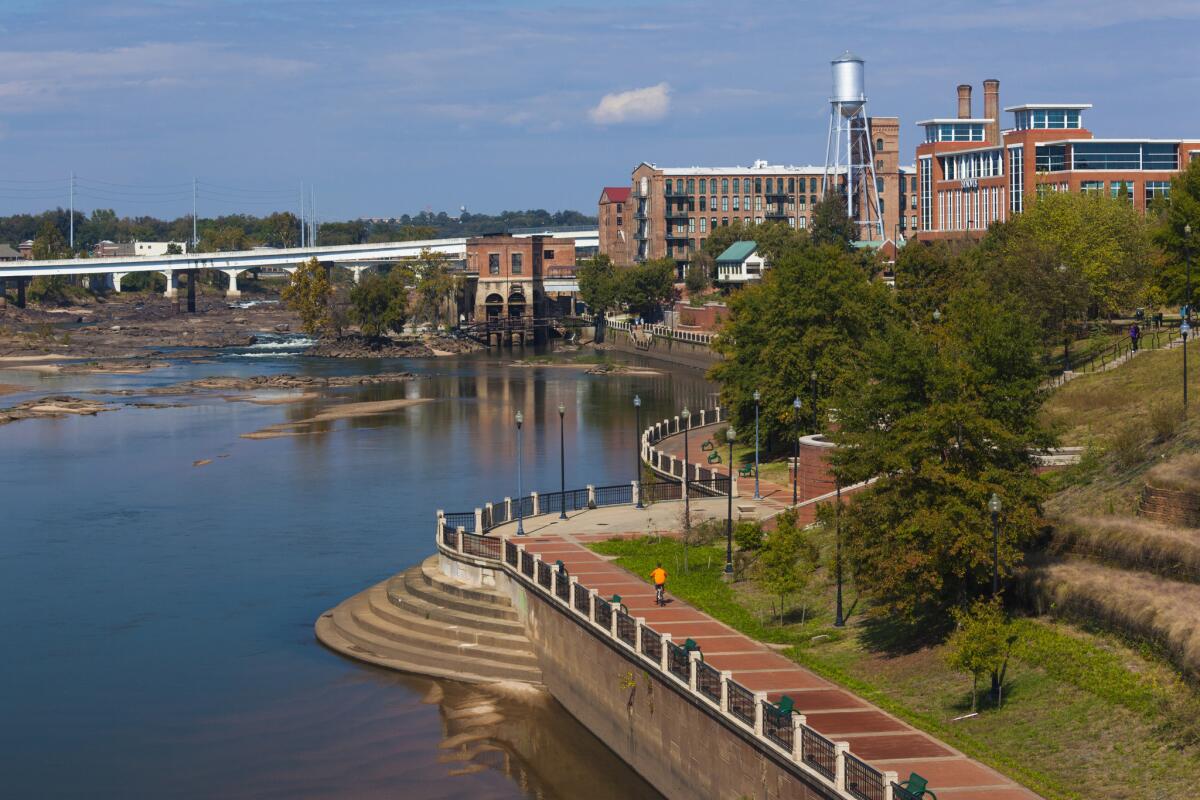
The Chattahoochee River in Columbus, Ga.
The Chattahoochee River in Columbus, Ga. (Danita Delimont / Getty Images)
Seeking to revitalize its riverfront, Columbus, Ga., with a population 200,000 or so, created what is purported to be the world’s largest urban whitewater course, giving rise to a robust industry.
Cotton and tobacco warehouses were converted into condos and apartments, and locals and visitors routinely head to the river to watch rafters and kayakers.
Charleston, S.C.
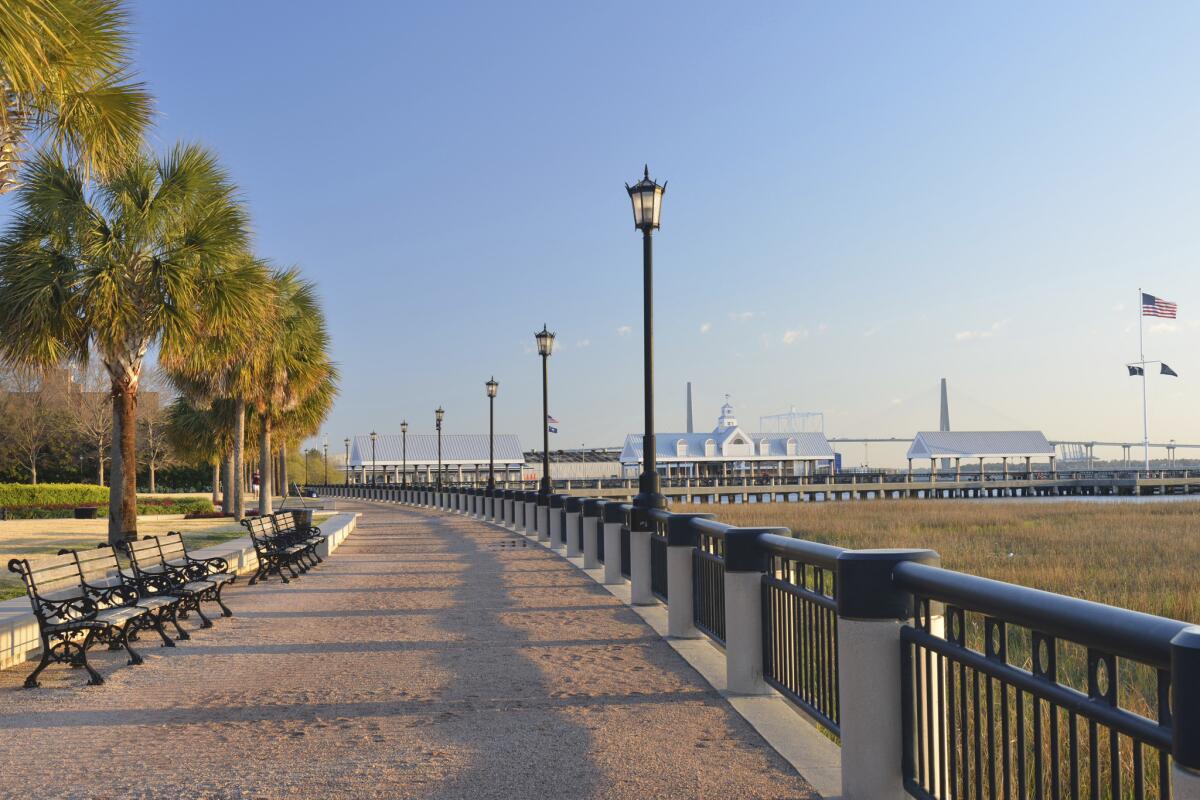
Waterfront Park in Charleston, S.C.
Waterfront Park in Charleston, S.C. (Aimin Tang / Getty Images)
Charleston, S.C., provided a lesson for planners seeking to turn a riverfront into a cash cow.
Years ago, developers approached city officials with a proposal to build several large condo towers on the Ashley and Cooper rivers. Longtime Mayor Joseph Riley turned them down, choosing instead to build world-class parks along the riverfront, thereby giving the best of the city to the public. Today, McMahon said, the most valuable land is next to the parks.
ALSO:
Army Corps board approves $1.3-billion L.A. River restoration proposal
Sign up for Essential California
The most important California stories and recommendations in your inbox every morning.
You may occasionally receive promotional content from the Los Angeles Times.




